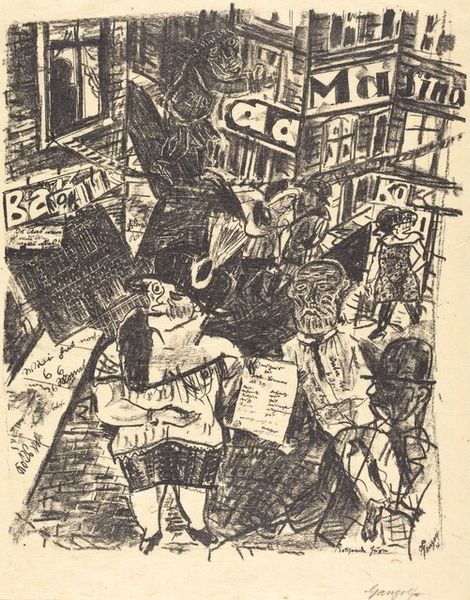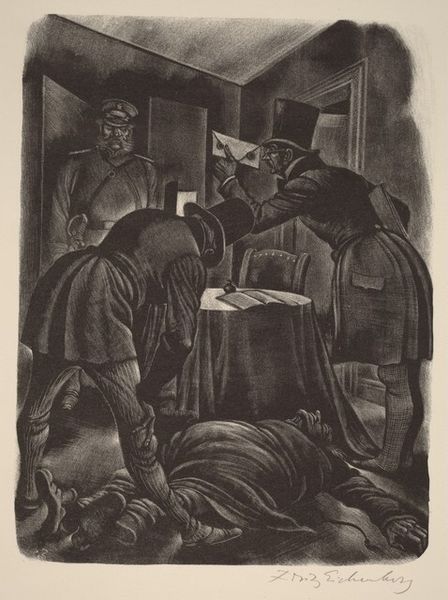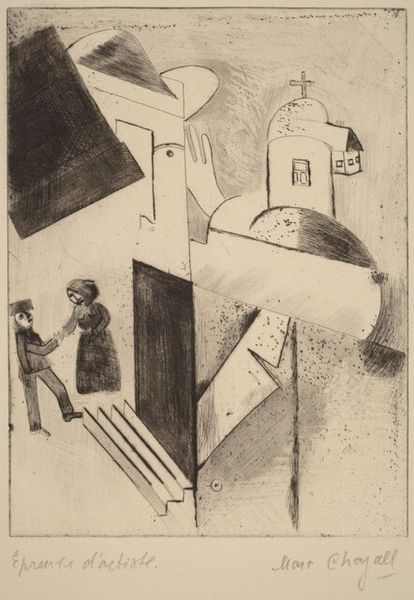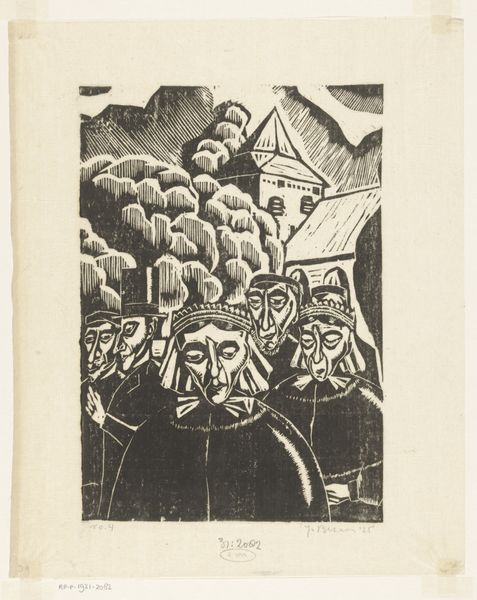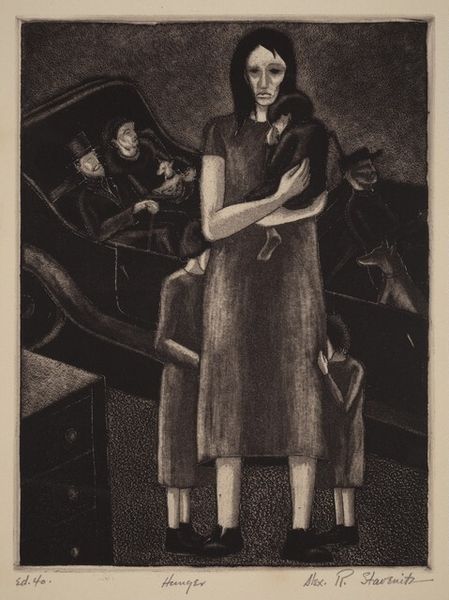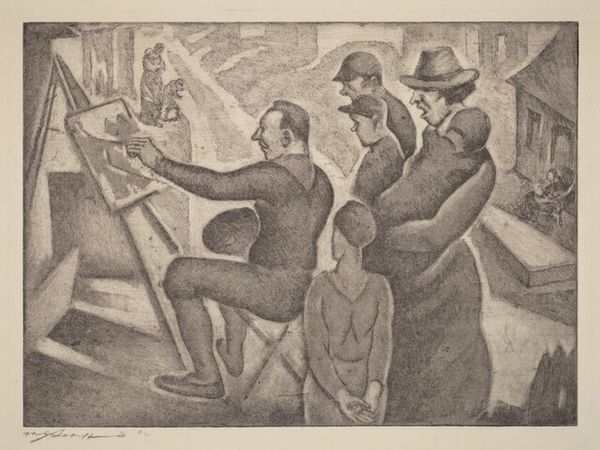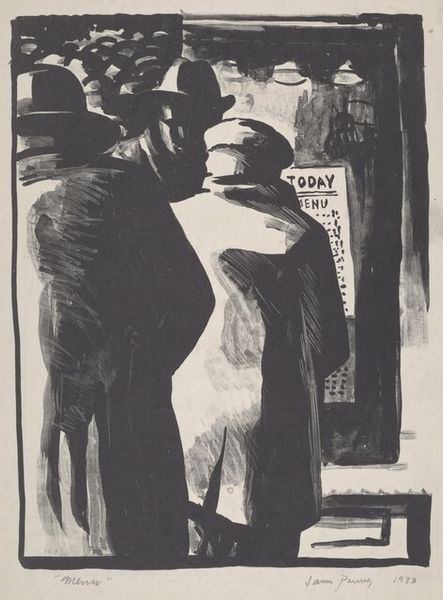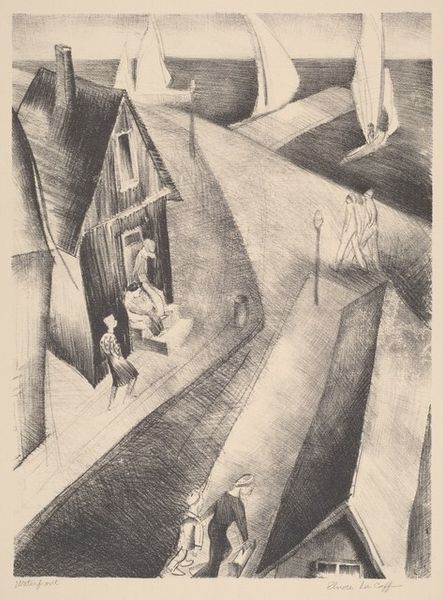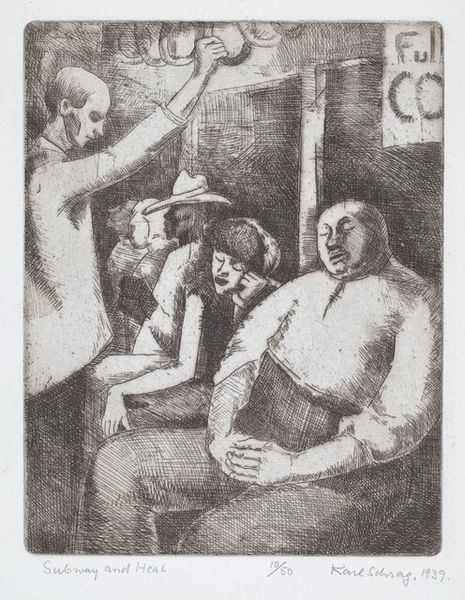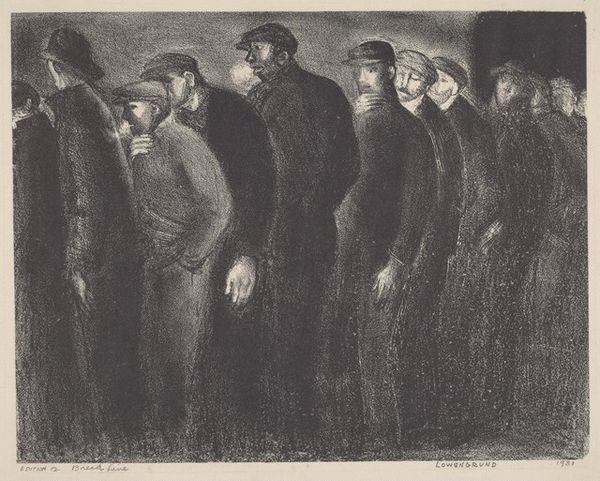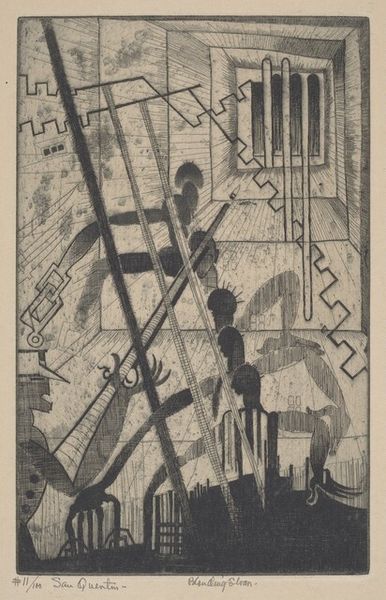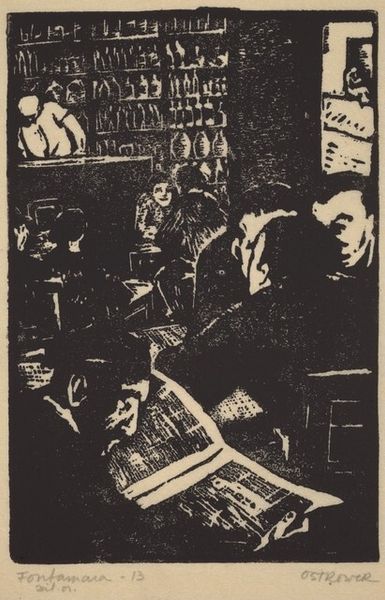
drawing, print, charcoal
#
pencil drawn
#
drawing
# print
#
landscape
#
charcoal drawing
#
social-realism
#
pencil drawing
#
cityscape
#
charcoal
#
regionalism
#
realism
Dimensions: plate: 27.6 × 17.6 cm (10 7/8 × 6 15/16 in.) sheet: 33 × 25.4 cm (13 × 10 in.)
Copyright: National Gallery of Art: CC0 1.0
Curator: This somber yet striking piece is titled "Heritage of Smoke" created by Frank Daniel Fousek around 1937, seemingly rendered with charcoal or perhaps even a pencil drawing printed. What feelings does it evoke for you? Editor: There's a heavy feeling, a stillness, but it is disturbed by the towering smokestacks in the background, which seem ready to unleash more. It speaks of environment and childhood, with something ominous looming. Curator: The smokestacks dominate, yes, but they also offer a connection to industry and provide context to the children who gather in this bleak, almost dystopian, urban space. It strikes me as social realism reflecting on the economic circumstances of the era. Editor: It’s not just about economics; the "heritage" in the title resonates as more of a generational inheritance of environmental damage. What symbolic price are these kids paying? Their faces are so individual yet drained. Curator: Absolutely, Fousek invites that interpretation through potent symbolic contrast, a group of working-class figures huddle together against the grim background, implying they are, indeed, interconnected through circumstance and, perhaps, community. Editor: Do you see how their very presence almost historicizes what's occurring in the backdrop? Their stance asks us to remember these times but, more critically, not repeat the cycles of the exploitation of our people, of our Earth. The muted palette just amplifies that point. Curator: I can see that. The smokestacks in older paintings usually represent innovation, societal progress. Fousek shows us a turning point; a shift where smoke has become synonymous with distress. I notice a hint of winter: bare trees, heavy coats; symbols of hibernation awaiting warmth. Editor: I agree. Considering it was made during the Depression Era, its narrative transcends just recording that period. The print seems to hint that these social and ecological issues, of profit and health, persist beyond any one economic era, which calls upon the collective need for social progress today. Curator: It has offered a way to consider images as agents in cultural conversations about history and society. Editor: Exactly! This piece shows how important it is to continue re-assessing inherited stories, encouraging necessary discussion.
Comments
No comments
Be the first to comment and join the conversation on the ultimate creative platform.

